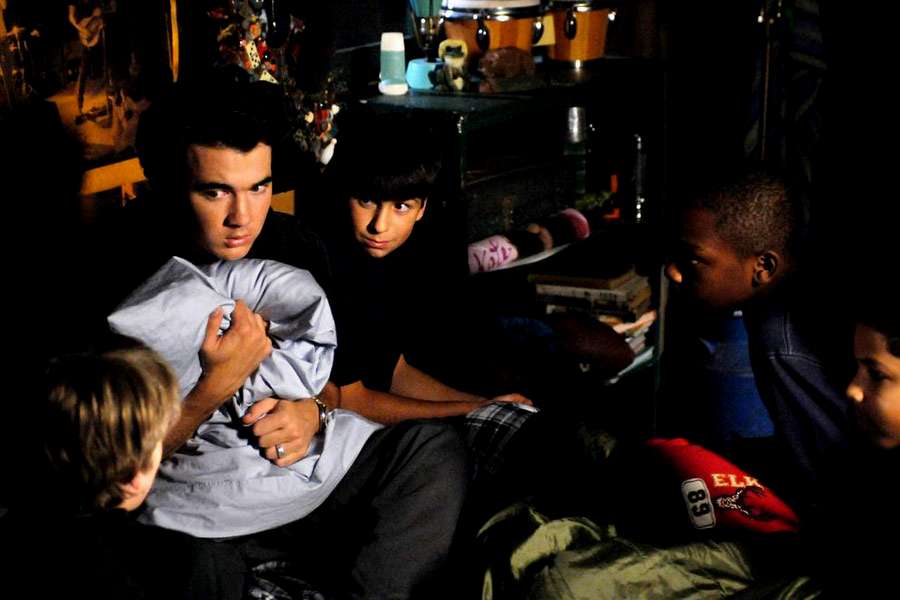

They served as a means of transport for diggers, wood and sand.

At the front and the back there were hooks for ropes which pulled the carriage out and into the tunnel. The internal weels covered with metal (cans) rested on railways and carried the vehicle. The external ones had larger diameter and kept the carriage on the rails. The carriages were made of wooden planks and the weels consisted of three rings. The railway along which tunnel carriages were moved was made of skirting-board taken from prisoners rooms. The prisoner who was responsible for operating the pump had an important task, though. The used air was pressed to chimneys and the fresh air inlet was hidden under the floor. They were air-tighted with thick paper and burried in the tunnel floor. The cans were made in such a way that after the bottom was cut out and the lid was opened it was possible to join them with one another. Te pipes were made of empty milk cans (called Klim). The inlet and outlet valves sucked in and pressed the air into the pipes. It was closed at both the ends with wooden lids with automatic valves. The tube was made of sacks used for carring clothes and wire that made it stiff. The air pump was made of a long wooden bed with a tube (bellows) made of impregnated tarpaulin. Under the entrance of the shaft three little rooms were bulit, which were used for storing the air pump, dugged yellow sand, sacks for carring the sand out, and all the tools, lamps and wooden planks. The walls of the shafts and ladders were covered with bed planks. Despite the structure of the soil (bright yellow sand) they managed to achieve the depth of 9 meters. After they managed to get through the layer of concrete and bricks, the digging of three shafts was started. The tunnel was to be built towards the north. “Harry” started in a room of the barrack 104 and the entrance was built in the base of the stove. The two tunnels were to be built towards the west.

The entrance of “Dick” was made in the sewage system outlet of the bathroom in the barrack 122. Tunnel “Tom” started in a room of the barrack 123 and the entrance was built in the base of the chimney. One of the most important and difficult tasks was to camouflage the entrances to the tunnels. Works concerning digging three tunnels: “Tom”, “Dick” and “Harry”, were begun at the same time. The task of the committee was to prepare and undertake a mass escape of 200 prisoners of war.

In March, 1943 The Committee X was established within the area of North Sector of Stalag Luft III in Sagan and S/Ldr Roger J.


 0 kommentar(er)
0 kommentar(er)
